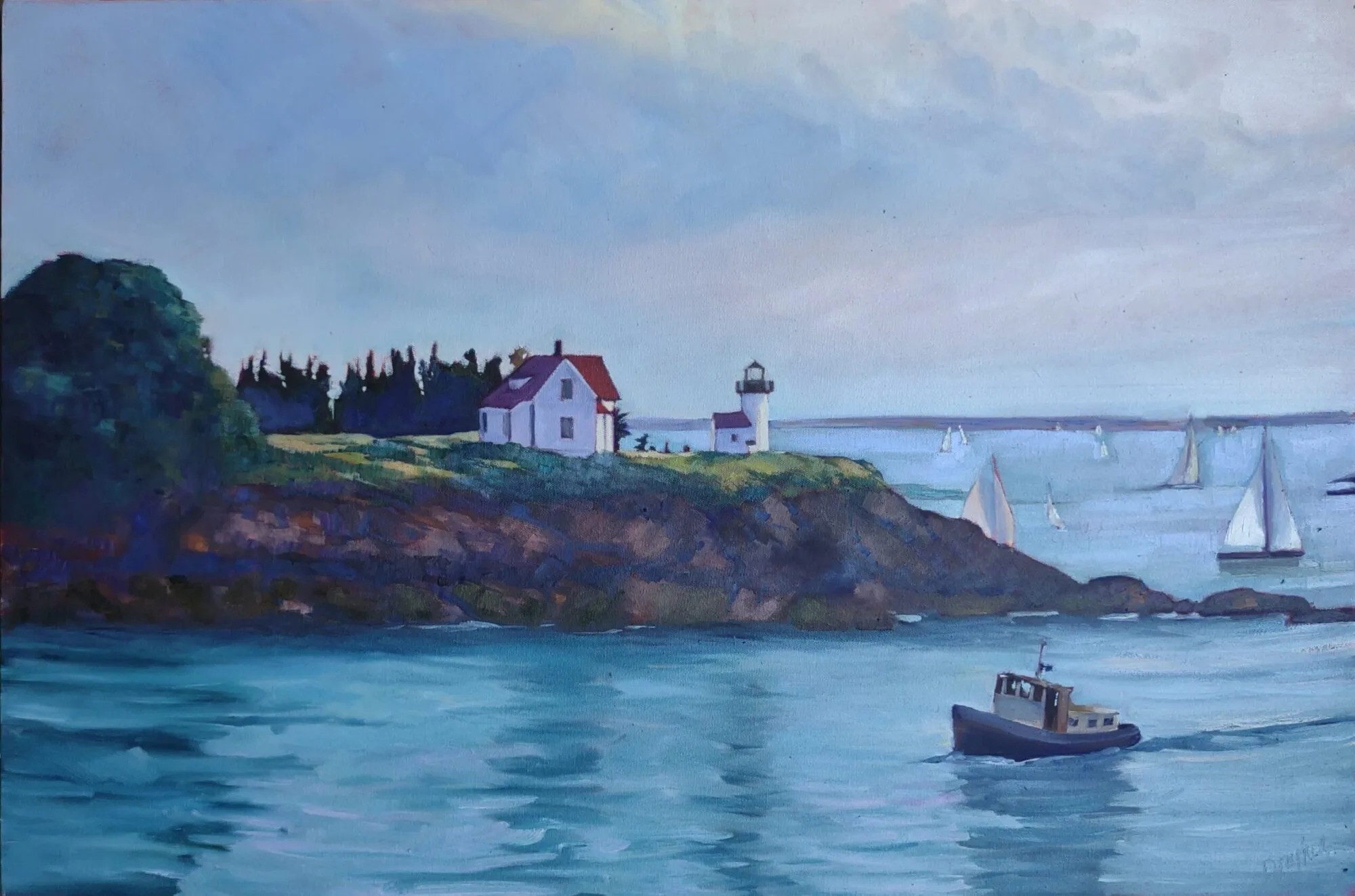 |
| Goes right into the slush pile… |
Last week, I wrote about my troubles painting lobster traps. Bob Baines, a lobsterman from S. Thomaston, ME, kindly lent me a trap to study. As a teacher, I know the only answer to confusion is close examination of the troubling object. As a student, I don’t like hard work any more than anyone else. Exercises are good for us, but so much more exciting when they’re still in the planning stages.
Bob’s trap weighs as much as a fresh bale of hay or a kindergartener. Now imagine shifting 800 of the things. My respect for lobstermen—already high—rose another notch.
The trap is four feet long, a generous foot deep, and almost two feet wide. It has two “parlors”—the space where lobsters wait for their fishermen visitors—and one “kitchen”—the space where the bait is hung.
| The real deal weighs as much as your kid. |
Speaking of language, you may have heard that the expression “the bitter end” is a nautical term, referring to the inboard end of a chain, rope or cable—in other words, the part that gets wound around a bitt or bollard. There’s also a part of a lobster trap called the “ghost panel.” It allows lobsters to escape if a trap is lost. According to Maine’s state regulations regarding lobstering, buoys should be attached to their lines with so-called “weak links” to protect whales from entanglements.
Who knew lobstering was such a poetic exercise? Mankind has been getting its food from the sea almost as long as we’ve been talking, so I suppose language is deeply entwined with fishing.
Axonometric projection grids were a cheat for draftsmen back in the days when they drew by hand. You laid them on a light table and drew above them. I still have a set. I could have made this easier on myself by using them to draw the wire mesh, but I chose to do it freehand instead. Estimating perspective is always good for the mind.
My real goal was to try to figure out a way to represent the color interference of different layers of mesh without drawing every gridline separately. I drew the trap freehand—by which I mean I used a straight edge and no measurements—on a very cheap bit of canvas from Ocean State Job Lots.
 |
| My erasures with water pulled the gesso right off this very cheap canvas. |
I keep those canvases for students who forget their own, but now I’m not sure they’re good even for that. Erasing, I rapidly peeled the gesso off the boards. They handled paint just as badly.
My trap was squatter and shorter than the real thing, but no matter. I wanted to paint it using the #6 or #8 filberts I was using on my actual work. Obviously, this is no way to get any detail, but I haven’t been after detail, just an impression.
| And the brush I painted with… |
Had I been working in either watercolor or acrylics, I’d have approached this by painting the background and contents of the trap and applying the grids on top of these. But oil paint doesn’t work that way. I settled for painting in a dark pattern for the grids, plugging the holes with color and then restating the darks by incising back to my initial darks.
It’s never going to win me a scholarship to art school, but I’ve learned what I needed to know. Thanks, Bob, for the loan of your trap.


